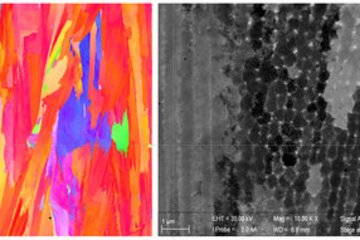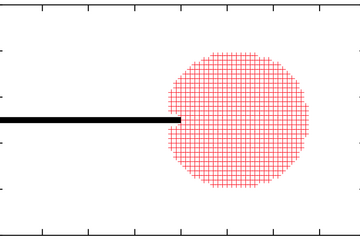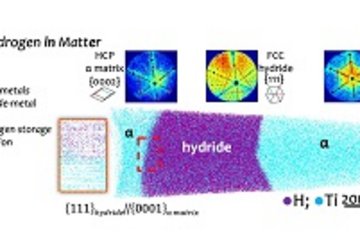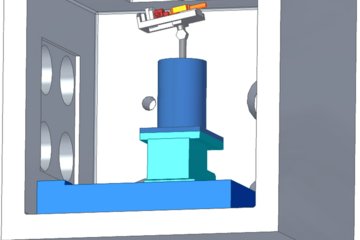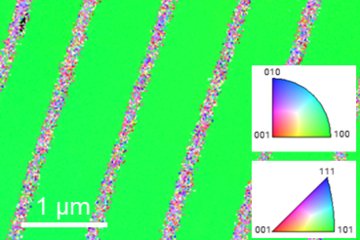All genres
1.
Journal Article
Enhancing thermal stability and mechanical properties in fully-amorphous ZrCu nanolaminates. Acta Materialia 303, 121681 (2026)
2.
Journal Article
Equiatomic CoCrFeNi Thin Films on C-Sapphire: The Role of Twins and Orientation Relationships. Advanced Engineering Materials 26 (19), 2400720 (2024)
3.
Journal Article
Tailoring Mechanical Properties and Shear Band Propagation in ZrCu Metallic Glass Nanolaminates Through Chemical Heterogeneities and Interface Density. Small structures 5 (9), 2400011 (2024)
4.
Journal Article
Decomposition and dewetting of super-saturated Cu-15 at. % Co solid solution film. Materials and Design 241, 112892 (2024)
5.
Journal Article
Mechanical properties and thermal stability of ZrCuAlx thin film metallic glasses: Experiments and first-principle calculations. Acta Materialia 258, 119226 (2023)
6.
Journal Article
Effect of composition and nanostructure on the mechanical properties and thermal stability of Zr100-xCux thin film metallic glasses. Materials and Design 219, 110752 (2022)
7.
Journal Article
New Mechanism for Long Photo-Induced Enhanced Raman Spectroscopy in Au Nanoparticles Embedded in TiO2. Small; This article also appears in: Hot Topic: Surfaces and Interfaces; Rising Stars 18 (25), 2201088 (2022)
8.
Journal Article
Symbiotic crystal-glass alloys via dynamic chemical partitioning. Materials Today 51, pp. 6 - 14 (2021)
9.
Journal Article
Understanding Grain Boundary Electrical Resistivity in Cu: The Effect of Boundary Structure. ACS Nano 15 (10), pp. 16607 - 16615 (2021)
10.
Journal Article
Influence of substrates and e-beam evaporation parameters on the microstructure of nanocrystalline and epitaxially grown Ti thin films. Applied Surface Science 562, 150194 (2021)
11.
Journal Article
Nanocrystalline equiatomic CoCrFeNi alloy thin films: Are they single phase fcc? Surface and Coatings Technology 410, 126945 (2021)
12.
Journal Article
Approaches to Measure the Resistivity of Grain Boundaries in Metals with High Sensitivity and Spatial Resolution: A Case Study Employing Cu. ACS Applied Electronic Materials 2 (7), pp. 2049 - 2056 (2020)
13.
Journal Article
Syngas Evolution from CO2 Electroreduction by Porous Au Nanostructures. ACS Applied Energy Materials 3 (5), pp. 4658 - 4668 (2020)
14.
Journal Article
Light management in TiO2 thin films integrated with Au plasmonic nanoparticles. Semiconductor Science and Technology 35 (3), 035016 (2020)
15.
Journal Article
A review of experimental approaches to fracture toughness evaluation at the micro-scale. Materials and Design 173, 107762 (2019)
16.
Journal Article
Integrated Au/TiO2 nanostructured photoanodes for photoelectrochemical organics degradation. Catalysts 9 (4), 340 (2019)
17.
Talk
Boosting mechanical properties of thin film high entropy alloys through nanoengineering design strategies. 16th International Conference on Local Mechanical Properties, Prague, Czech Republic (2024)
18.
Talk
Strong and ductile thin film metallic glasses through advanced nanoscale design strategies. COST MecaNano General Meeting 2023, Madrid, Spain (2023)
19.
Talk
Effect of composition and nanostructure on mechanical properties and thermal stability of ZrCuAlx thin film metallic glasses. COST MecaNano General Meeting 2023, Madrid, Spain (2023)
20.
Talk
Effect of composition and nanolayering on mechanical properties of Zr100-xCux thin film metallic glasses. Talk at Université catholique de Louvain (UCL), Louvain-la-Neuve, Belgium (2022)





